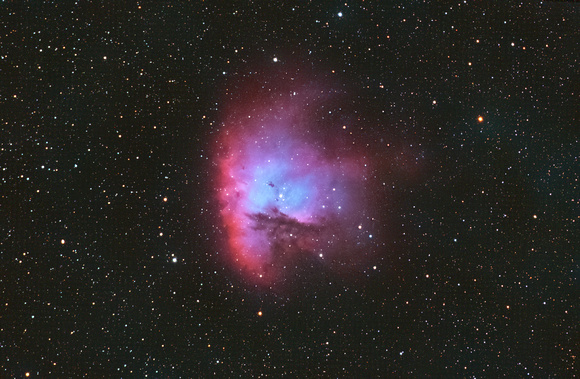NGC 281 "Pac-Man" in H-alpha, O-III, and RGB
Pac-Man Nebula, NGC 281, an emission region in the constellation of Cassiopeia, in narrowband hydrogen (red) and oxygen (blue), with true-color stars.
This is a composite of a false-color narrowband image with a true-color one. The red in the nebula represents hydrogen-alpha emission, while the blue is oxygen-III. Frequently a blue nebula means it's reflecting starlight, as with the Pleiades or the Orion Nebula, but here it's just a color I found pleasing to portray the glowing oxygen gas. I could have chosen, say, green for hydrogen and purple for oxygen just as easily.
The stars, however, are as accurate as I can make them. I did a separate series of exposures with red, green, and blue filters, and processed the result separately to ensure that the colors didn't desaturate. I also used a tool in Astro Pixel Processor to calibrate the star colors to the real thing.
This image lies at the bottom of the right half of Cassiopeia's "W" and is about a degree and a half wide, or roughly the distance between the stars in Orion's belt. All told, I've got about half an hour of exposure time for the stars, and 8 hours for the nebula.


